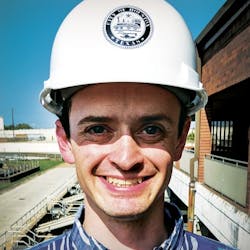Bob Crossen is managing editor for WWD. Crossen can be reached at [email protected].
As I write this, Chicago is expecting ridiculously cold temperatures in a few days. The forecast is showing a high of -16ºF and a low of -27ºF, and the windchill is expected to be lower than -50ºF. These can be life-threatening temperatures.
While my first concern is whether my car will start, a greater concern is the integrity of water pipe in residences throughout the Chicago Metropolitan area. In fact, my apartment complex company sent out letters to all residents urging them to keep the water trickling throughout the day so that it doesn’t freeze up and to open cabinets or closets to keep the pipes warm.
This got me thinking more about how operators handle temperatures this low, so I called the plant that supplies my water—Evanston Water Plant—to ask them about how they are preparing for the cold.
First, the water distribution supervisor noted that they are doubling staff on duty for the day. The aim of this is to ensure necessary manpower while keeping people safe. While one worker is out in the cold, another is warming up inside. Operators will swap throughout the shift to make sure they are not out so long as that can be dangerous.
When looking deeper at worker safety, he said it also is important they stay hydrated and wear appropriate clothing. Bundling up to stay warm will help in the short term, but this also means menial work could result in a sweat. In temperatures as cold as those expected, the moisture can then freeze and pose danger to employee’s well being. This makes the rotating shift even more important.
He also said the plant has heated intakes where it brings in its water from Lake Michigan. This, he said, helps keep everything running smoothly. The bigger concern will be a few days after the freezing event, when temperatures are predicted to reach 40ºF. As the ice on the lake melts, chips and breaks, fragile ice can enter the system and become slush. This could cause problems for pumping equipment, so operators will be attentive to this on the relatively warmer days.
As for other processes, such as aeration, he said the water from the lake is good enough that aeration is not needed. But for facilities with open-air aeration, the issue with slush could pose issues for plant operation after the intakes.
Lastly, he said the public messaging to residents comes into play. Regardless of the temperatures in the winter, he said the city sends out letters and emails about best practices to ensure pipes do not break.
Certainly there were more facets to this than I initially had expected. I posed this question to the Water & Wastewater Operators of the World, Unite! group on Facebook, as well, and got some good responses. One noted operators will make rounds to ensure all equipment is functioning and to chip away any ice on moving equipment, such as valves. Another said they bring things inside where possible and take alternatives to certain processes to ensure everything operates effectively.
More than anything, there was one common consensus: keeping operators safe is the
highest priority.


